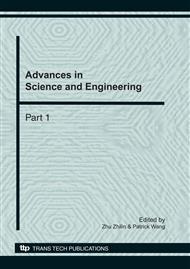p.839
p.847
p.852
p.858
p.866
p.873
p.877
p.881
p.887
The Effect of ENSO on Wheat Futures Based on EMD and GARCH Model
Abstract:
At present, most of the studies on the relationship between El Nino Southern Oscillation and agricultural futures focus on perceptual analyses and directly data analysis, and these discussions are usually limited to futures price. This article uses EMD algorithm to decompose Wheat futures prices and denoised ENSO index, and finally gets the negative relationship between El Nino Southern Oscillation and wheat Futures prices. Then, this article conducts the comparative analysis of operation performance based on El Niño Southern Oscillation, finding that this mode of operation can greatly increase yields, which further explains the practical significance of ENSO. In order to explore the impact of El Nino Southern Oscillation on wheat futures yields, use classic GARCH models, transform ENSO index into virtual variables, respectively introduce them into the mean value equation and conditional variance equation. After analysis, the conclusion shows that the impact is mainly on the volatility of return rate, which reminds traders of considering risk management first.
Info:
Periodical:
Pages:
866-872
Citation:
Online since:
November 2010
Authors:
Keywords:
Price:
Сopyright:
© 2011 Trans Tech Publications Ltd. All Rights Reserved
Share:
Citation:


